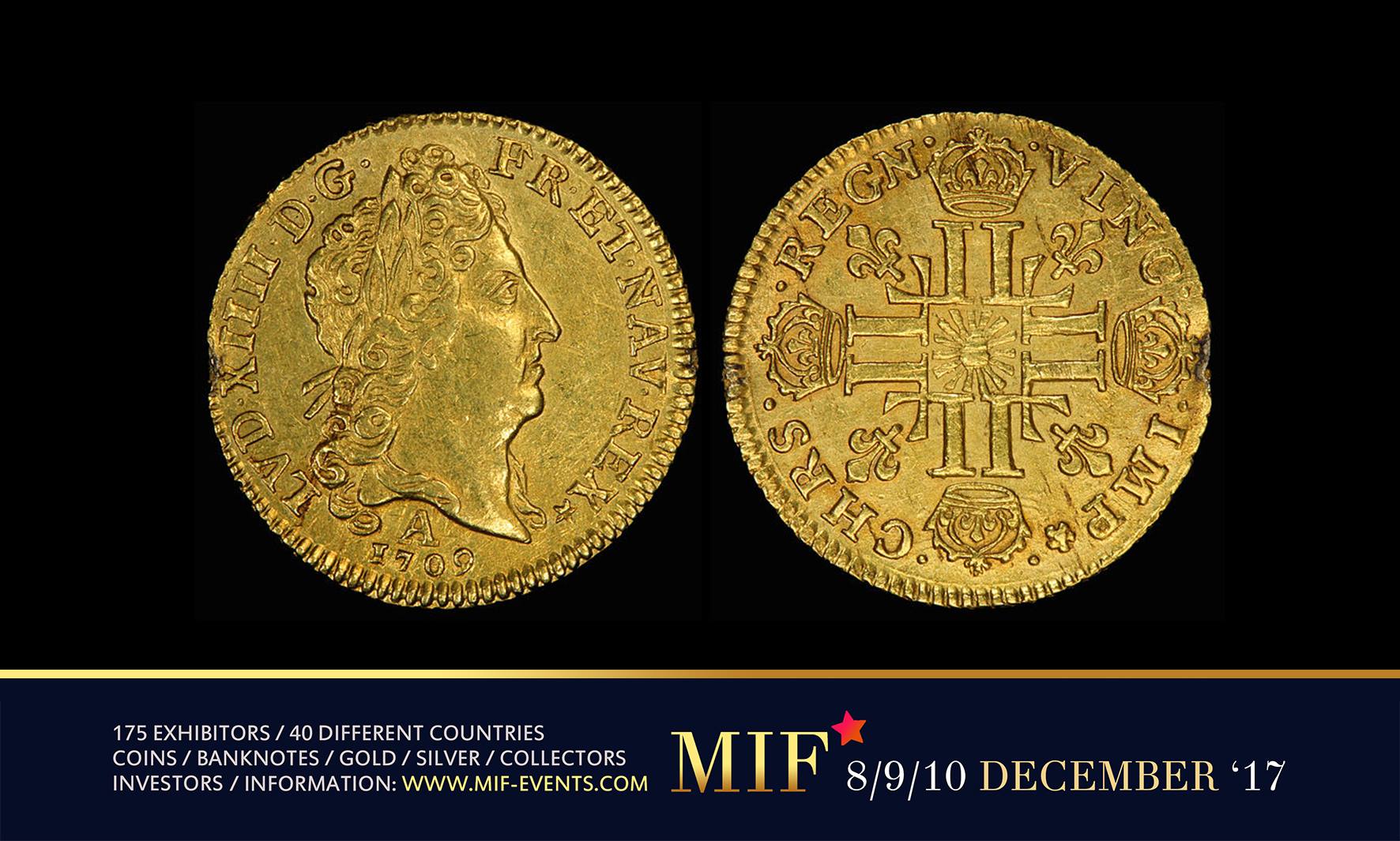
The Louis d’or (a gold coin) replaced the franc which had been in circulation (in theory) since John II of France. In actual practice the principal gold coin circulating in France in the earlier 17th century had been Spanish: the 6.7-gram double escudoor “doubloon”, of which the Louis d’or was an explicit copy. There also existed a half-Louis coin (the demi-louis d’or) and a two-Louis coin (the double louis d’or).
LOUIS XIII
The Louis d’or fixed several problems with previous French gold coinage. Louis XIII previously struck coins from 23 carat gold even though Charles V had made 22 carats the de facto international standard for gold coinage a century earlier.
Royal edicts had set the official values of his gold coins so low that it was profitable to export them. Since they were still made by hand, cheaters could shave bits of gold from the edges of the coins before passing them on, an illegal process called clipping.
To fix this, Jean Varin, a medalist from Liège, installed machinery in the Paris mint which made perfectly round coins so that clipping could not go undetected.
The new demi Louis d’or maintained the weight of the old écu d’or, but decreasing its fineness to 22 carats, allowing it to circulate at a value of five livres. Its double, the Louis d’or had the weight and fineness of the Spanish pistole, or two escudo coins, which was an international trade currency.
Smaller values were available through a number of silver coins – the écu (sometimes called the louis d’argent), also available in ½, ¼ and ⅛ écu denominations (60, 30 and 15 sols) – and copper coins (sols and deniers).
The Louis d’or under Louis XIII had a dimension of about 25 mm, and a weight of 6.75 g.
Recto: the king’s head turned to the right with the motto “LVD XIII DG – FR ET NAV REX” (LVDOVICVS XIII DEI GRATIA FRANCIAE ET NAVARRAE REX “Louis XIII, by the grace of God king of France and of Navarre”).
Verso: the royal monogram (4 double “L”s surmounted by a crown with fleur de lis) and the motto “CHRS REGN VINC IMP” (CHRISTVS REGNAT VINCIT IMPERAT “Christ reigns, conquers and commands”).
Engraver: Jean Varin (1604–1672) The double Louis has a size of 28.5 mm and a weight of 13.47 g. The quatruple louis has a size of 35 mm and a weight of 26.88 g. The 10 louis has a size of 44 mm and a weight of 66.87 g. One of these was sold in 2012 for 210,000 euros, which makes it the most expensive French coin of any time. The half louis has a size of 20 mm and a weight of 3.34 g
LOUIS XIV
The Louis d’or under Louis XIV was similar in most respects to its predecessor and had a dimension of +/- 25 mm, and a weight of 6.75 g.
Recto: the king’s head turned to the right with the motto “LVD XIV DG – FR ET NAV REX” (LVDOVICVS XIV DEI GRATIA FRANCIAE ET NAVARRAE REX “Louis XIV, by the grace of God king of France and of Navarre”).
Verso: the royal monogram (4 double “L”s surmounted by a crown with fleur de lis) and the motto “CHRS REGN VINC IMP” (“Christ reigns, defeats and commands”). Engraver: Jean Varin (1604–1672)



